Planting aspen trees
When is the best time to plant an aspen grove?
When the suckers come up, do you keep them or get rid of them?
Comments (39)
bpgreen
19 years agoWhere in Utah do you live?
Unless you live in the mountains, the best time to plant an aspen grove is never, and if suckers come up, you should get rid of them.
The aspen is a beautiful tree that ie very well adapted to the mountains, where there is plentiful precipitation, year round cool breezes, etc. For some reason, we feel compelled to grow it in the valley, where it gets too hot and too windy, not to mention what happens when the aspen tries rooting in the 8+ pH soil in the valley.
I don't mean to sound negative, but if you have to plant an aspen, it doesn't belong there.
Rosa
19 years agoI have to agree with the last poster. Many people mis-site these and they do not do well in a horicultural setting. They are also prone to disease and this type of out of place planting is yards makes the problem worse. I'd think twice about including them in my yard unless they are there naturally (in which case they will increase on their own).
delray
19 years agoI kind of agree that they are not the best tree, but probably not for the same reasons.
They are getting pretty maligned here in the West (for reasons sited) as much as the Bradford Pear in the East.
I have planted a lot of Aspen and you just have to figure they are going to be short lived and enjoy their fast rise to maturity and the dancing leaves. I think they can be beautiful and effective part of a mountain landscaping even in the valley.
Just be aware of their shortcomings. Don't ever plant them in a lawn. Plant them in berms 10 -15' or as far from grass as you can. Plant them in clusters so they can protect each other. Realize they will be short lived so maybe you will want to plant other slower growing varieties with a 10--30 year plan.
Once established the Aspen seem not to need any more water than more "select" trees such as Linden, Maple, Mountain Ash, Catalpa, Ginko, Oak, etc. and definitely need less than Birch (the worst of the lot as far as water needs).
As far as the best time to plant, probably now. With suckers, I guess that depends if you want a grove or not. I don't have too much problem with suckers with a good weed mat in a berm covered with 2-4" of bark. If you start getting suckers in an area that you have designated for your "grove" then power to it. If you plant to close to the grass, then you are SOL.
canyon_home
19 years agoI live at an elevation about a mile high in a little canyon along the Wasatch. There are stands of aspen less than a mile and 800 feet of elevation from my house but no natural trees in the neighborhood. I've often wondered how low the aspens were growing before the pioneers logged them for fenceposts and other things the straight trunks would have been good for. The human planted trees seem to thrive in the neighborhood but few of them are more than 20 years old.
mlepinsky
18 years agoWe live in Boulder, and have a space where we are removing a HUGE bush type thing from nest weekend, we wanted to plant a small Aspen grouping (not knowing alot about the tree, other than it's beauty), our neighbors in this townhome community have tons of Aspens in their yards that were planted when they built this complex (1978) and they are huge and flourishing greatly. No signs of disease and very healthy. Our grass would be about 3 feet away on all sides and the trees would be on the north side of the house. Can we plant these Next week, even though it is not early spring? We heard ladybugs help. We welcome all thoughts and advice - thanks!
coflowernut
18 years agoDelray - why do you recommend planting aspen in berms??? I see that a lot here in Steamboat (elevation about 7600 ft), but always thought that it was because it is easier than trying to dig a hole in this rocky ground.... thanks, J
fantastico
18 years agoWe took out our diseased group of aspen trees (7000 ft above sea level if you're wondering) but have left over suckers. Any ideas on how to get rid of them would be appreciated.
delray
18 years agoIf you really want to plant Aspens, I only suggested a berm with the idea of keeping them a distance from your lawn. I am also assuming you will have edging. The farther from the lawn the better, but there is a good chance they will eventually find your lawn anyway.
I have some large, large berms (30-50 ft wide) on a large lot that I have planted them in and have not had problems yet, but there is a good chance they will find my grass eventually. Those who plant right next to the lawn are asking for problems.
I realize Aspen has fallen out of grace like the Bradford Pear. It was all the rage mid 80's through 90's. I have had them in previous homes and had a few succumb to borers, but the majority seem very happy to be there. They just don't get the beautiful fall color like in the high mountains.
To take them out, you can try straight Roundup injected into anything of substantial size coming out of a connected root system. They also make a tree/brush killer. Good luck
Rosa
18 years agoDelray says, I realize Aspen has fallen out of grace like the Bradford Pear"
Too true. But at least Aspen are native unlike the Bradford Pear.
greenbean
18 years agough ..i hate to hear all of this bad news about the aspen tree! they are so beautiful and i want to plant some next to my deck for privacy ...
i guess i am still not convinced that i shouldn't.
they grow so tall ---so fast--and look so pretty. okay, so they don'y turn red like the ones up at higher elevations, but they do look nice in the fall....and they quiver and quake when the wind blows.
they did well at my other home....and provided privacy pretty quick, but we had to move so i have no idea what they are doing today.....and i miss them!
please tell me why i shouldn't plant them next to the deck...catwhiskas
18 years agoIf you like them that much then you should plant them. I planted about 8 of them 11 years ago and they are doing just beautiful. In my opinion they definitely are FAST growers! They provided me with privacy where I wanted it within a couple of years. Some years their color was nicer than other years, I guess this all depends on how much moisture they got. Mine never had any problem with disease. I wouldn't hesitate to plant them again!
catladysgarden
18 years agoAspen are beautiful, but are best left in the mountains. They are not a good lawn and garden tree. They are fast growing, but short lived. They also seem quite disease prone. The worst thing about them is that they sucker everywhere. I always had to spray mine for scale as well.
becky_alias
17 years agoI am in a Denver suburban neighborhood, lots are 1/5 to 1 acre, quite small. I had four aspens 3 years ago when I moved into my home. Two were lost in the ice storm last October and the other two I had cut down. Two were always diseased, not pretty at all. The suckers are driving me crazy, but I'm told if I keep pulling them they will eventually stop suckering. I have read these threads but did not understand what would happen to the lawn. What I do know is that the lawn area near two of them we can not get grass to grow and it's been three years of trying (the other two, the diseased ones, were about 10 feet away). The most suckers come up in this area, so my guess is that the trees are killing the grass (and I thought it was mites!). Also, my neighbors grass that is near these now-gone trees doesn't grow so well. So, not only do I have a lawn problem and suckers but I have caused it in my neighbors yard also. 5000 feet is just not native for aspens. Please leave them in the mountains to be enjoyed on a special Sunday fall afternoon drive!
shudavies
17 years agoI just want to note that Aspens planted in warmer zones are better off if they are situated where the ground stays cooler, whether its from extra moisture and mulch or afternoon shade or all three. On the north and east sides of buildings, with drip or soaker hose irrigation, would be a reasonably worthwhile endeavor IMO. I haven't observed the problems with Aspens in lawns that some have described but the statements are compelling and would make me think twice.
coloradobird
17 years agoWe live in Littleton, and had to remove five aspen trees last fall that were dead/dying. I don't know when they were planted, as we moved in just a few years ago. They had knobby swollen things all over the branches, the leaves were spotted with black, and they were generally looking worse and worse. I would not plant aspen at this altitude. Between the suckers and the short life spans/diseases, I don't think they're worth it. They are gorgeous, but this doesn't seem to be the altitude for them.
david52 Zone 6
16 years agoPerhaps, given the the 'cost' in the years needed to grow a tree in the Rocky Mountain climate, sharing experiences of particular, popular species such as aspen might save someone some problems down the road. They don't do well around here either, unless, as shudavies mentions, they are planted on the north side of a structure. There are 5 or 6 nurseries around here, and none of them recommend planting aspen at an altitude much lower than their native habitat, with the exception of one outfit that actually sells aspen clumps, and will bring out a back hoe and plant them for you. I haven't seen them advertise recently, perhaps they went out of business.
Are growing conditions more appropriate for the species around Boulder? I haven't been there in years, but seem to recall they grow naturally on the northern slopes / sides of the creeks leading from the mountains into town.
There are other, popular trees as well that should come with caveats, for example the Lombardi poplar grows very well but sheds some sort of gloppy stuff, so its a good idea to plant if where it can shed gloppy stuff to its hearts content and not bother anything, another example is the globe willow, which takes a considerable length of time to shed its leaves, and sheds branches all winter long. They work very well down in the draw, or along a fence with a pasture for a neighbor, their native habitat is along streams on the Western Slope. Both the poplar and the willow require a considerable amount of water to do well.
digit
16 years agoWow indeed, noah-navies, it looks like YOUR personal agenda was making a disparaging remark about public figures and camouflaging that as a defense of a landscaping choice! Remarkable . . .
I, for one, have no desire to see this forum move into political discussions.
digitS'
michelle_co
16 years agoDon't feed the troll. He's a user who registered today, just ignore the troll and he will go away.
Cheers,
Michelledavid52 Zone 6
16 years agoNow, now, its pretty clear that we need something more stalwart than a "quaking" aspen. Just from the name alone, the terrorists win. Try to chainsaw one for firewood or something, its another example of 'cut and run'.
Sorry, couldn't resist.
A few years ago, one nursery here were selling some European birch species that looked an awful lot like aspen. I saw some today, maybe 5 years after planting, and they look pretty nice. I have a weeping birch that is doing rather well.
michelle_co
16 years agoQuaking Aspen
Weeping Birch
Blue Spruce
Pussy WillowWhat a bunch of pansies!
Cheers,
Michellekeeping.idaho.green
15 years agoWow, I just came in from planting 5 quaking aspens in my backyard. I LOVE these trees, they remind me of the good ol' camping days growing up. Looking out my back window you see my neighbors fence with a ditch in front of it. I planted the trees between the ditch and the fence about 30-40 feet away from my house. Now I feel nervous. Is this to close to my house? I don't really care about suckers I will just kill them if I don't want them. What I planted was suckers I found on my side of the fence from a neighbors tree, I just moved them down because I know they are fast growers and I wanted to be able to see them from my window instead of looking at my neighbors fence and house.
david52 Zone 6
15 years agoDon't worry about it - I think the previous discussion had more to do with planting them in inappropriate places, like lower in altitude, where they're very susceptible to diseases. If they're thriving in your neighbors yard, and you 'liberated' a few suckers for your planting, then you aren't in the same situation of someone paying a several hundred dollars for tree in an inappropriate environment.
Skybird - z5, Denver, Colorado
15 years agoHi KIG,
HereÂs a link to one of the previous RMG Aspen threads with more information. If you search for aspen trees on the Rocky Mountain forum, youÂll find a bunch more threads, but they all say pretty much the same thing. I love the way the leaves quake in the breeze too, but they come with a lot of problemsÂbut if I ever decided I wanted one, or 500, all I have to do is to quit mowing the suckers from the neighborÂs dying aspen. IÂve been Weed-B-GonÂing and RoundupÂing them for a couple years now, and it knocks them down for a while, but doesnÂt, and never will, get rid of them, so I have a permanent supply if I ever change my mindÂwhich I wonÂt!
Stevation, I noticed you asked a question after my last post on that thread which I apparently never saw or didnÂt have time to answer, but to answer you, NO, you wonÂt hurt the original tree with Weed-B-Gon, or with Roundup. I use both, depending on if theyÂre growing in the grass or all by themselves, and the chemicals just donÂt make it far enough down the roots to get anywhere near the original trees. Sometimes they even come backÂweakerÂin the same place and need to be sprayed another time or two to really get rid of that particular one or clump. And other suckers, if I miss them with the spray, keep coming up very close to sprayed ones, so, yes, the chemicals DO kill the roots, but they clearly arenÂt able to kill the roots very far away from the sucker thatÂs been sprayed. As a side note, I just Weed & Feeded my grass, and whatever is in that stuff knocks them down a little bit too, but itÂs VERY temporary, and the sprays are much more effective.
Welcome to RMG, KIG! Hope to see more of you around here.
SkybirdHere is a link that might be useful: Aspen roots thread
scarletsquirrel
15 years agohi,
i live in the garden state of NJ and I am at an elevation of approx. 50 feet. Am i able to grow aspen trees in my yard at this elevation? if so, any ideas where in NJ I may find them?
thanks,
scarletsquirrel
david52 Zone 6
15 years agoI wouldn't even try. Go for any one of the native, or possibly European birch species,
Here is a link that might be useful: Birch trees
poppyhead
15 years agoThis is scary reading about the negative experiences people are having with Aspens. We have 3 wating outside to be planted. Hopefully we'll be as lucky as our neighbors and avoid all the problems. Aspens seem to do well here in Longmont.
My m-i-l down in Denver has an Aspen that's suffering from blackened small leaves and it's never really thrived. We thought that maybe it was just an unhealthy tree so it was interesting reading about similar experiences here.
The funny thing is that in Washington(same USDA zone and weather than here in CO) we used to have a backyard full of beautiful large, healthy Aspen. We bought them from a local Aspen farm that used to ship Aspens to Colorado.
RUTH SCHLEGEL
9 years agoI am a Colorado native, born and bred, and a dedicated aspen lover. Ever since I can remember the women in my family took trips every September to view the aspen. I live in the banana belt in Colorado, east of Pueblo, along the Arkansas River. About 15 years ago, I found aspen growing around a nursery in La Junta. After talking to the owner of the nursery, who told me he has a healthy stand in his backyard, I bought, my aspen. I planted my 6' tall baby in front of my shrub border on the north side of my yard, about 3' in from my lawn. I have never had a problem with suckers. I wish I did! I allowed the first two suckers to grow next to the mother tree, and they are still alive. Due to water restrictions, I've had to water my lawn, shrubs and perennials with an impact sprinkler that reaches across my entire yard. I know it's not ideal for my aspen, I know it will die one day, but it is MY aspen, even at 4,300' elevation, Zone 5. I enjoy the fuzzy adorable catkins when they come out in the spring. I eagerly watch the fresh, bright green leaves appear and now, April 21, I can watch them tremble and shimmer in the sun while I do dishes and look out to my back yard. When fall comes, yes, my aspen's leaves are black-spotted, but they still have some color change. And, of course, I still hop into my car, every fall, with anyone who will go with me and travel to visit Bishop's Castle and look at San Isabel Lake and meander where I will, enjoying and photographing all my state's glorious aspen in all shades of peach, apricot, orange and gold. A week prior, I sometimes travel past Leadville and photograph the huge stand of aspen now overtaking the mining ghost town of Gilman, where I spent many summers growing up as a child when it was still a mining camp. Should I grow an aspen in my back yard at my elevation? Yes, yes, a thousand times yes! My ex-husband , on a farm near the Arkansas River 25 miles east of me and his backyard is full of an entire grove of aspen, huge, tall and healthy. I believe it all has to do with love of aspen and determination to have one of our very own of these magnificent, bewitching trees. So, go grow a birch if you want, but for me and my yard, we will have our aspens.
amester
9 years agoWe took out eight aspen about - what, 10 or 12 years ago? We had completely stripped the yard so I was able to pull up ALL of the roots - or so I thought (some over 20' long!). Until about two years ago I was STILL having new babies pop up. Now my neighbor's aspen is showing up in my flowerbed, 15' away from the tree itself.
Seeing them leaf out was pure joy. Realizing what a thug they were was disheartening. They definitely have their place if you are okay with them 'wandering' and don't mind suckers popping up from time to time. If you like your yard tidy, proceed with caution.
And Aspen Glade in the San Juan mountains is pure pure pure Aspen Heaven. :)amester
9 years agoBut how nice that people who come here for advice can get a range of experiences and decide for themselves! Huzzah, free will!
ZachS. z5 Platteville, Colorado
9 years agoInteresting aside... The largest single organism on planet earth is an aspen grove out in Utah (who recently changed their state tree from the Colorado blue spruce to the quaking aspen).
I haven't found them to be tremendously "invasive" and we have half a dozen of them in the front yard. I haven't found them to be tremendously successful either. On half of them, the leaves EMERGE from their buds in the spring with black spots on them, and they seem to die out in less than 20 years. Suckering is highly stimulated by crown disturbances, such as fire, so I wonder if "basal pruning" would have the same effect, and by cutting down the main tree, it actually encourages the roots to sucker more.
I was also reading recently on the U.S. Forest Service that the amount of aspen forest area in parts of the Rocky Mountains in shrinking.Skybird - z5, Denver, Colorado
9 years agolast modified: 9 years agoZach, re your comment about "cutting down the main tree..." Been there, done that! Go to this thread and down to the third paragraph of my post on March 14--it starts with: The place I lived before....
Cutting them down creates FORESTS!
http://forums.gardenweb.com/discussions/2126656/invasives-from-hell?n=25
Pando! Somebody was talking about that here several years ago, and I was considering going to see it a couple years ago when I went all the way across Utah to Kanab, but it turned out it was too far from where I was staying and I was too busy with other things. But while I was checking it out I found out that large parts of it have started to die out, and some question whether or not it will survive. Haven't researched it any further since I wasn't able to go see it anyway. If I'm ever staying closer to it, it's still on my menu of Possible Things to Do & See! Here's a wikipedia article with some very basic info.
http://en.wikipedia.org/wiki/Pando_%28tree%29
And if anybody is interested in MORE aspen root info, here's another--olde--thread!
http://forums.gardenweb.com/discussions/2131956/aspen-roots?n=22
Skybird
gusman14
Original Author9 years agoI am the OP with the original question. I planted aspens 10 years ago in a berm and they did fantastic for about 5 years with suckers coming up and propagating quite well. The suckers eventually started to get into the lawn. I used a mega-torch to destroy the suckers but sadly it must have damaged the root system with the extreme heat as that spring the aspens died off. I have not replanted but I plan on planting 3 of them again this Mothers Day.
I live at 4500 feet and the soil is that of an old riverbed.david52 Zone 6
8 years agoOne can get the same white bark look by planting birch trees - Betula species - in lieu of aspen. I have a weeping birch (Betula pendula) thats now 10 years old and starting to look pretty good.
RUTH SCHLEGEL
8 years agoThanks, david52! When my aspen die, I just might plant a weeping birch in the corner of my yard as a screen for my storage building. In the meantime, I will continue to enjoy my aspen and its offspring. Interesting to know that Utah has aspen and the largest aspen grove! Might have to meander that way to see it when we go to Debinki. Thanks for the info, everyone!
Beth Stilwell
7 years agoWe live in southern Indiana and are building on three acres (wooded) that has a pond. I love the tall Aspens and yellow leaves they have, but after reading many of the comments, I'm second guessing planting them on our property. My plan was to sprinkle them throughout the woods and get several growing around the pond, since they like water. But if they don't turn yellow (like in the mountains) and die off quickly, I'm thinking I should go with a different tree. I do like the fact that they "repopulate" on their own, but not sure if that's enough reason to plant them. If not the Aspen, then which Birch tree is best?
treebarb Z5 Denver
7 years agolast modified: 7 years agoHi Beth,
Welcome to RMG! Have you considered Betula alleghaniensis, yellow birch? it seems to be a native to your area and would likely do much better for you than aspen. I found a recommended tree list from the Indiana extension service at Purdue that might be helpful to you. I'll link it below. The tree table is on pages 4 and 5.
Here's a link to the Arbor Day Foundation info on yellow birch.
You might try posting on the Tree forum, too. Our climate, elevation and poor soil are so different from yours in Indiana. I think you'll get better info specific to your situation on the Trees forum and they can suggest some alternatives trees for you to consider.
Barb
Lina Rodriguez
2 years agoI planted 5 aspen trees in a row spacing about 1foot apart i wanted shade and Beauty. is that ok?
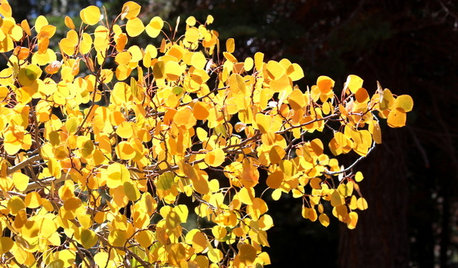


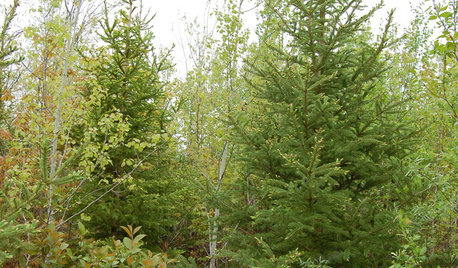


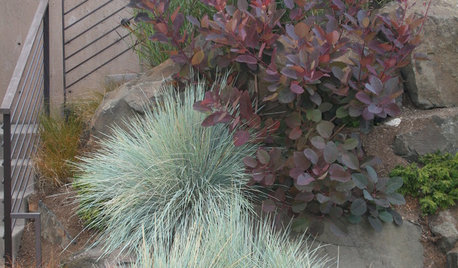


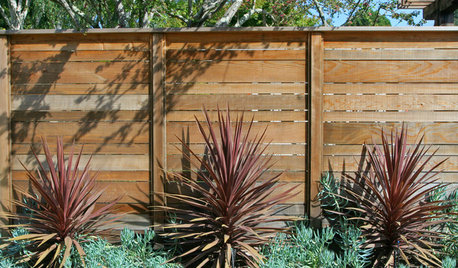






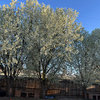
HU-512921995